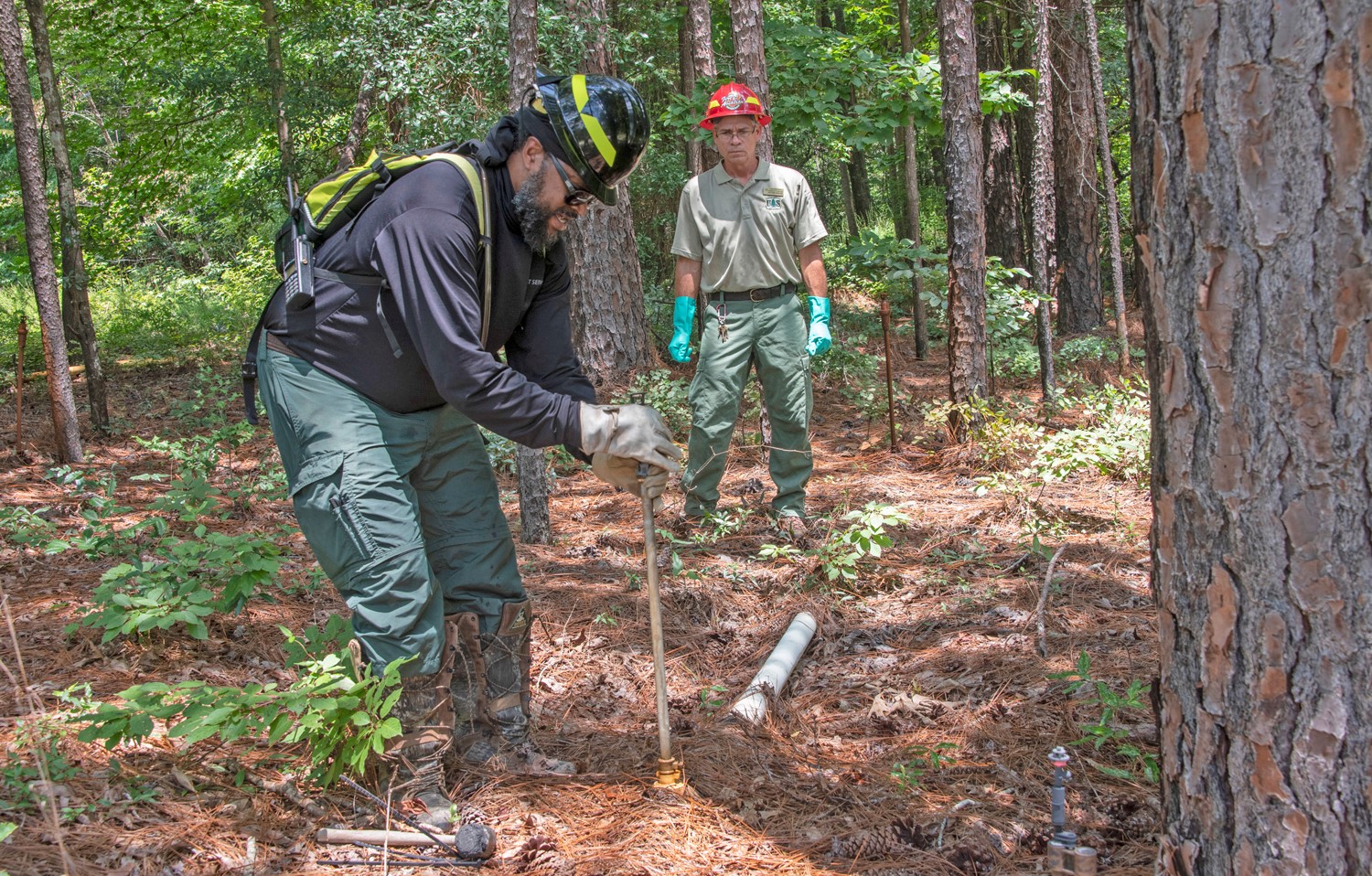U.S. Forest Service employees Secunda Hughes (left) and Andrew Thompson inspect irrigation piping and sprinkler heads, part of a 62-acre pine plantation used to safely disperse tritium at the Savannah River Site.
The Department of Energy’s Office of Environmental Management (EM) is managing the release of tritiated water using a 62-acre plantation of pine trees and other natural resources to limit radioactively contaminated groundwater from reaching waterways on the Savannah River Site in South Carolina.
Having completed three separate decommissioning projects, EnergySolutions takes the final steps in restoring the sites to a natural state.
For any nuclear power plant that has been permanently shut down, site restoration is the ultimate decommissioning goal when contracting with a utility to demolish a facility. The task, however, is not as simple as mobilizing heavy equipment and waving a wrecking ball or planting explosives to implode the facility, then loading up the debris and sending it to a landfill.
There is a real science and engineering approach necessary to safely restore the land to its original state. That has been the goal for EnergySolutions over the past decade as the company works to safely decommission shuttered nuclear power plants—packaging, transporting, and disposing of the waste, and restoring the sites for whatever reuse the owners and host communities see fit.


-3 2x1.jpg)
 and Andrew Thompson.jpg)
